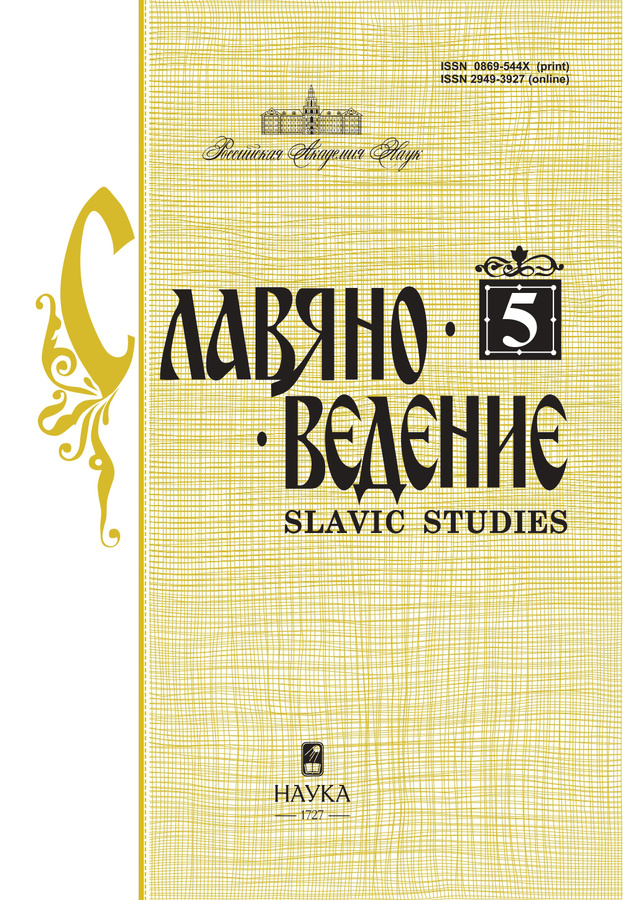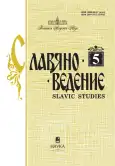Slavic Studies
A scientific peer-reviewed journal devoted to Slavic history and culture; culturological, literary or linguistic materials are concentrated in individual issues.
Editor-in-Chief: Sedakova Irina Aleksandrovna, Ph.D.
Frequency of publication and availability: 6 issues per year. The issues for 1992-2022 (Slavonic Studies magazine) are completely laid out. See also the issues of the journal "Soviet Slavonic Studies" (the former name of the journal, complete file for 1965-1992).
Indexing: RSCI , RSSI , RSCI Core , eLIBRARY.RU . It is included in the list of peer-reviewed scientific publications recommended by the Higher Attestation Commission.
Media registration certificate: № 0110184 от 04.02.1993
ISSN 0869-544X (Print)
最新一期
编号 5 (2025)
Articles
"The Old Tsarist General" Grigory Yanushevsky at the Crossroads Between Ukraine and Russia
摘要
 5-17
5-17


Resettlement Question in National Periodicals of Western Outskirts of the Russian Empire (1905-1914)
摘要
 18-33
18-33


Conflicts in Albania and Around It in the Perception of Russian Periodicals from August 1913 to July 1914
摘要
 34-52
34-52


Christian Confessions of the SFRY in the Archival Materials of the Council for Religious Affairs Under the Council of Ministers of the USSR in 1980-1991
摘要
 53-66
53-66


Draft of a New Ideographic Dictionary of Slavic Languages
摘要
 67-79
67-79


Essays
Prince N.A. Orlov and the Polish Question in the Early 1860s: Subjective Schemes and/or State Diplomacy
摘要
 80-91
80-91


The film "In the Mountains of Yugoslavia" in the Context of Relations Between the USSR and the FPRY
摘要
 92-106
92-106


TO THE JUBILEE OF THE JOURNAL
Leading Russian Journal of Slavic Studies
 107-110
107-110


Journal Slavic Studies in the 1990s: Answers to the Challenges of the Time (Medieval History and Ethnolinguistics)
 111-114
111-114


About the Journal Slavic Studies
 115-119
115-119


From the history of Slavic studies
The Slovak Thaw of the First Half of the 1960s Viewed by a Young Soviet Literary Scholar. Trip of Yu.V. Bogdanov to Czechoslovakia (1963-1964)
摘要
 120-135
120-135


Reviews
O.V. Kochukova, S.A. Kochukov. An Artist on the Battlefield: Reportage Graphics of the Russo-Turkish War, 1877-1878; O.V. Kochukova, S.A. Kochukov. Heroic Liberators. Album of Engravings on the History of the Russo-Turkish War of 1877-1878
 136-139
136-139


Soviet and West Belarus: Disengaged but Unified, 1921-1939. Documents and Materials
 140-142
140-142


A.I. Miller. The Ukrainian Question and Identity Politics: Collection of Scientific Papers, ed. by D.V. Efremenko
 143-145
143-145


Scolarly life
Scientific Conference "Pragmatic Potential of Verb Categories in the Russian Language"
 146-149
146-149


In memoriam
Professor Dragoljub Petrović (1935-2024)
 150-152
150-152












